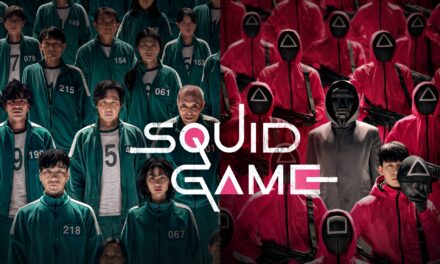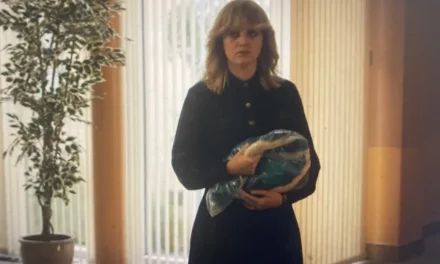Switching channels. Yesterday’s television theory– today.
This year, television scholars celebrate the 30th anniversary of John Fiske’s seminal work Television Culture. Based on a thorough analysis of television programmes, Fiske uncovered the economic and societal implications of television as a cultural institution. For the first time, his book brought together British, American and French scholarship on television and combined them into an insightful analysis of television in its cultural-historical context of that time.
Re-reading his work in 2017, let us ponder if his findings can be applied to the changed landscape of television culture. During the course of thirty years, television has been subject to several evolutions: HD-images are clearer, Dolby-Surround-sounds are brighter than ever and streaming services like Netflix provide entirely new forms of distributing television content. Television audiences undergo change as well. Gone are the days when people would stick together in front of the TV screen, focussing on watching a single show. Nowadays, the audience can no longer be regarded as an undifferentiated mass of people, which needs to be informed and entertained. Audience members come in all shapes and sizes and engage with television content in individual ways. Some members even employ a second screen in order to engage in various activities while the TV is running in the background. Despite these rapid changes we are facing, academic reflection on these alterations is lacking behind. Especially, theoretical work remains scarce. Thus, television scholars inevitably turn to established theories on television in order to explain recent phenomena. The view back shows that these theories were written against the backdrop of a certain technological and socio-cultural context in which television was situated. Thus, we have to ask whether we can still apply these older theories of television to current phenomena?
In this blog article, I would like to take you on a journey 30 (and more) years back, and invite you to a take a second look at John Fiske’s theoretical works Television Culture (1987) and Reading Television (1978, with John Hartley), as seminal works of television scholarship. Summing up their main points of argumentation, I pick up on some of their findings and re-think them in the light of using second screens by television audience. Can John Fiske’s work help us understand one of the most recent changes in watching television?
Television programmes between hegemony and subversion
Published in 1987, John Fiske’s Television Culture gave a tour de force through television as a cultural institution. Taking a Marxist stance towards his object of study, he regards Television as a “bearer/provoker of meanings and pleasure” (p. 1), which constantly produces new programmes. However, these programmes do not just simply provide information and entertainment for an interested audience, they are first and foremost commodities: Economic interests of powerful television producers drive their production. Based on Marx, Fiske regards this as ideological work, as television programmes provide a hegemonic stance, leaving little room for interpretation or even subversion (p. 13-14). Drawing from semiotics, John Fiske argues that television producers tend to narrow down the potential plethora of meanings into a single, dominant one – in order to be economically successful. Nevertheless, any form of television content is ripe with potential meanings. Despite the hegemonic stance of the programmes, individual audience members can interpret each programme differently, resulting in so-called texts. A single programme can be transferred into multiple texts, bearing several meanings for individual users.
Did the audience take the bard’s instrument?
Backing the hegemonic line of argumentation, John Fiske and John Hartley (1978, p. 85) state in their book Reading Television that television as an institution functions like a bard for modern societies. These traditional storytellers and music composers of medieval Gaelic and British culture served a vital function for society: They brought people from all walks of life together as an audience, entertained them with songs and stories, reflected on current events and provided a sense of sociability and hospitability. Bards were part of an oral culture, as they gave verbal performances, drawing heavily from all aspects of society. The bard acted as an interpreter of current events, as he reflected on them and created relevance for the audience members by making them entertaining. Bards also contextualized these events into larger forms of cultural knowledge, such as myths and histories of that given time (Fiske & Hartley, 1978, p. 88).
Despite describing it as a highly centralized and hegemonic cultural form, John Fiske (1987) brightens the bleak outlook on television. He places emphasis on the viewers and their powers to interpret or even subvert given television programmes. Individual texts, based on producer-defined programmes, can be seen as a “site of conflict between the forces of production and modes of reception” (p. 14). Television programmes are thus sites of struggle over meaning: Producers tend to enforce their ideology on the viewers; the viewers in contrary try to block out the hegemonic stance. As viewers interpret programmes as texts by reading them against the backdrop of their own social situation, they expand on the meaning of texts and take them to levels, which were not intended by the producers.
With the advent of second screens, “bards”, i.e. television as an institution, have changed their tunes. They no longer serve as a single, central hub for society, as highly fragmented and specialized audiences are no longer an undifferentiated mass of people that remain seated and silent during a performance. Instead, audience members are active and – with the use of second screens – quite chatty as well. On the scale of the media system, too many media channels fight for the audiences’ attention and on the scale of television as an institution, too many programmes are lining up to be watched. These programmes, however, bring together smaller communities of audience members, which gather in order to watch certain shows (e.g. famed television series or sports events), they engage with these programmes based on their own preferences and socio-cultural backdrop.
Audience members have become powerful. Technological change, such as time-shifted television or streaming services, enable audience members to overcome time restrictions of the bard’s performance. They can call him to the stage at their own convenience. The classical set-up of the stage – that is the living room with a television set in a central position with an arena-like arrangement of seating around – is no longer expectable, as television content can be watched on any screen – a television set, a laptop, a smartphone – which overcomes spatial settings. And talking about screens, some audience members tend to use more than one screen while watching television content – a second screen, such as a smartphone, enables them to perform other activities, playing games, checking emails or following up on the latest news. These days, everyone can become a critic, as audience members now are in a position to comment on television content through the use of social network sites on the second screen. Nevertheless, a more nuanced view on audience members and their activities has to be developed. From a social-cultural perspective, we observe generational differences in activities, which audience members perform through the second screen (for a deeper discussion see my previous blog article). From a psychological perspective, we have to look at audience members’ actions and experiences during their use of the second screen and on how they focus their attention. Using the second screen suggests that viewers direct their attention at multiple screens, which necessarily leads to interruptions in the flow of watching television. This further implies that viewers only glance at content on various screens. Accordingly, Fiske’s idea of television as a central bard for society needs to be re-aligned with regard to audience members’ social positions and individual actions.
As television’s position in society alters, audience members in some ways, become the new bards. Using their smartphones as an instrument, they become performers on the stages of Twitter and YouTube, gathering followers as an audience to listen to their stories. Based on Fiske and Hartley, audience members articulate the main line of events, implicate the consequences for other individual members of the audiences, assure them of their cultural belonging by referring to underlying myths and stories and thus transmit cultural membership for their audiences – only on a smaller scale.
Re-Reading Fiske with a second screen.
From this point of view, John Fiske’s (and John Hartley’s) broad ideas on television as a cultural form and on the power of audiences still hold up in today’s media environment. The recent use of second screens easily fits into their theoretical frameworks and presents a modern take on the idea of an active and talkative audience. Nevertheless, readers of these seminal works on television theory should take a critical eye on the political-economic perspectives given in these books. Placing the focus on individual television users and their actions, as Nick Couldry (2012) suggests, can give a more detailed view on the processes of subversion that John Fiske is interested in. A second screen – or a second book – could provide valuable additions as we adapt television theory to recent problems and phenomena.
Literature
Couldry, N. (2012). Media, Society, World. Social Theory and Digital Media Practice. Oxford: Polity.
Fiske, J. (1987). Television Culture. London, New York: Routledge.
Fiske, J., &Hartley, J. (1978). Reading Television. London, New York: Routledge.
Dr. Martin R. Herbers works at Zeppelin Universität in Friedrichshafen, Germany. Other than getting a great view over Lake Constance, he spends a lot of time watching television, especially comedy. His research interests are in the fields of political entertainment media and their contribution to the public sphere. You can follow him on Twitter.







